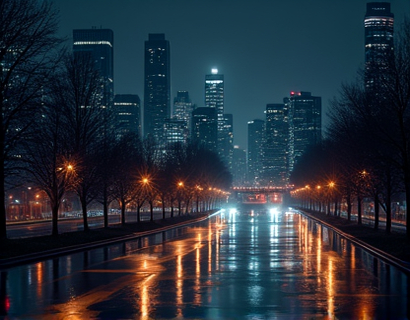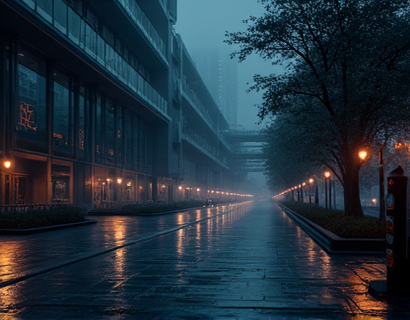Exploring the Ancient Indus Valley: A Comprehensive Guide to Cultural Heritage, Historical Sites, and Travel Insights
The Indus Valley, a cradle of one of the world's oldest civilizations, beckons travelers and cultural heritage enthusiasts with its rich history and profound significance. Spanning across present-day Pakistan and northwestern India, this ancient region offers a unique blend of archaeological wonders, vibrant local culture, and breathtaking natural landscapes. This guide delves deep into the cultural heritage, historical landmarks, and practical travel tips to ensure an enriching and unforgettable journey through the Indus Valley.
Historical Background and Significance
The Indus Valley Civilization, also known as the Harappan Civilization, flourished around 3300 to 1300 BCE. It is one of the three ancient civilizations of the Old World, alongside Mesopotamia and Ancient Egypt. The civilization is renowned for its advanced urban planning, sophisticated water management systems, and intricate craftsmanship. The cities of Harappa and Mohenjo-Daro, both located in present-day Pakistan, are the most extensively excavated sites and serve as a testament to the civilization's grandeur.
The Indus Valley Civilization was characterized by its well-planned cities with grid-like layouts, advanced drainage systems, and standardized weights and measures. The people of this civilization were skilled in metallurgy, pottery, and textile production. The lack of monumental architecture and the absence of a known written script that has been fully deciphered add to the mystique of this ancient culture.
Key Historical Sites to Visit
Visiting the historical sites of the Indus Valley is a journey back in time, offering a glimpse into the lives of its ancient inhabitants. Here are some must-visit sites:
- Mohenjo-Daro: Located in the province of Sindh, Pakistan, Mohenjo-Daro is one of the most significant archaeological sites. The Great Bath, a sophisticated water drainage system, and the Granary are notable structures. The site provides a comprehensive view of urban planning and daily life in the Indus Valley Civilization.
- Harappa: Also in Pakistan, Harappa is another major site that offers insights into the civilization's social and economic structures. The site museum houses an impressive collection of artifacts, including seals, pottery, and jewelry.
- Kalibangan: Situated in Rajasthan, India, Kalibangan is known for its early evidence of wheel-made pottery and a well-planned city with a citadel and a lower town. The site also features a unique fire altars and a sophisticated drainage system.
- Rakhigarhi: This site, also in Haryana, India, is one of the largest but least excavated cities of the Indus Valley Civilization. Ongoing excavations are revealing new insights into the civilization's extent and complexity.
- Dholavira: Located in Gujarat, India, Dholavira is known for its excellent water conservation systems and intricate carvings. The site's unique layout and well-preserved structures make it a fascinating visit.
Cultural Heritage and Local Traditions
Beyond the archaeological sites, the Indus Valley region is rich in cultural heritage and local traditions. The area is home to a diverse population with a blend of ethnicities, languages, and religions. Visitors can experience the vibrant local culture through:
- Festivals: The region celebrates a variety of festivals, including the colorful festival of Basant in Punjab, the Sufi music festival in Lahore, and the Baisakhi festival in Haryana. These events offer a glimpse into the local customs and traditions.
- Cuisine: Indus Valley cuisine is a delightful fusion of flavors, with dishes like biryani, kebabs, and various vegetarian options. Street food stalls and local restaurants serve authentic meals that reflect the region's culinary heritage.
- Crafts and Artisans: The area is known for its traditional crafts, including block printing, embroidery, and pottery. Visitors can witness artisans at work and purchase unique handmade items as souvenirs.
- Music and Dance: Traditional music and dance forms, such as Qawwali and Bhangra, are integral to the region's cultural fabric. Attending a performance can be a memorable experience.
Practical Travel Tips
Planning a trip to the Indus Valley requires some preparation to ensure a smooth and enjoyable journey. Here are some practical tips for travelers:
- Best Time to Visit: The optimal time to visit the Indus Valley is from October to March, when the weather is pleasant and comfortable for sightseeing. Summers can be extremely hot, while winters can be cool, especially in the evenings.
- Getting There: The region is well-connected by air, rail, and road. Lahore and Karachi in Pakistan, and Amritsar and Chandigarh in India, are major airports and railway stations. From these cities, local transport options like taxis and buses are readily available.
- Accommodation: A range of accommodations is available, from budget guesthouses to luxury hotels. Booking in advance, especially during peak seasons, is recommended to secure a comfortable stay.
- Local Etiquette: Respecting local customs and traditions is crucial. Dress modestly, especially when visiting religious sites, and seek permission before taking photographs of people.
- Health and Safety: Ensure you have all necessary vaccinations before traveling. Carry a first-aid kit and stay hydrated, especially during hot months. It's also wise to have travel insurance for peace of mind.
Hidden Gems and Local Attractions
While the major sites are impressive, the Indus Valley region offers several hidden gems and local attractions that are worth exploring:
- The Cholistan Desert: Located in southern Punjab, this desert region offers a stark contrast to the ancient cities. Visitors can experience camel rides and visit local villages to learn about the nomadic lifestyle.
- The Sutlej River: The Sutlej, one of the major rivers of the Indus Valley, offers scenic boat rides and fishing opportunities. The riverfront areas in cities like Ferozepur in India are particularly beautiful.
- Local Markets: Exploring local markets, such as the Lahore Walled City's bazaars or the Amritsar Anand Pur Sahib Market, provides a authentic shopping experience with local handicrafts, spices, and textiles.
- Nature Reserves: The Kekri Mangroves in Pakistan and the Guru Gobind Singh Wildlife Sanctuary in India offer opportunities for nature lovers to spot diverse flora and fauna.
Conclusion
The Indus Valley is a treasure trove of historical, cultural, and natural wonders. From the ancient cities of Harappa and Mohenjo-Daro to the vibrant local traditions, every aspect of this region offers a unique and enriching experience. By following this guide, travelers can delve deep into the cultural heritage, explore historical landmarks, and enjoy practical travel insights to make their journey through the Indus Valley truly unforgettable.










































